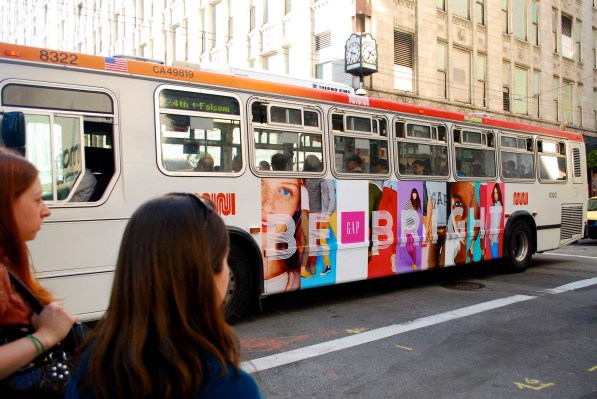It’s not just startups that are trying to push what’s possible with mobile advertising — the Gap recently completed an ad campaign combining traditional transit ads with geo-fencing technology.
Here’s how the campaign worked: The Gap worked with out-of-home ad company Titan to place ads at bus stops and other transit locations in New York, San Francisco, and Chicago. Then Titan created geofences around the ads, which activated the mobile part of the campaign for people who were nearby. In other words, you might see a Gap ad at a bus station, then while you’re waiting for the bus to arrive, you open up Words With Friends, which serves another ad, this time with a coupon for $10 off a $50 purchase. (If the app is running in the background, the ad could still deliver if you open the app within two hours of leaving the area.)
Chris Gayton, Gap’s senior director of media and brand engagement, says the campaign was a good way to “close the loop” by giving someone incentive to come into the store right after Gap has delivered its big, colorful brand message. And the results are promising. Gap and Titan say the campaign, which ran from Feb 20 to March 6, delivered 2.5 million impressions, with a 0.93 percent clickthrough rate. (San Francisco did the best, with a 1.17 percent CTR.) That’s pretty good compared to a standard mobile clickthrough rate of 0.2 percent.
Gayton says he’s definitely interested in experimenting with similar campaigns in the future. And while the initial effort was focused on coupons (because that’s an easy way to track how many sales the ads are driving), the technology could also be used to deliver ads that go beyond a static image, say by including a video or a link to more information.
Dave Etherington, Titan’s senior vice president of marketing and mobile, adds that this is part of a larger shift in out-of-home advertising market (a category that includes billboards and all the other outdoor advertising that you say).
“The lines are kind of blurring,” he says. “You’re only a click away now from rich brand experiences and purchases.”
